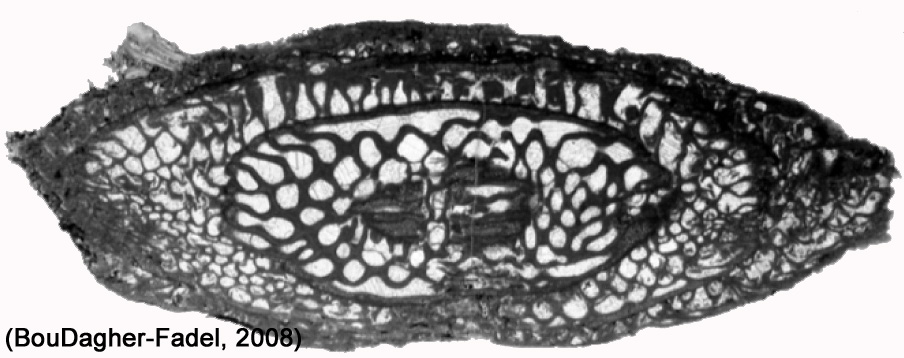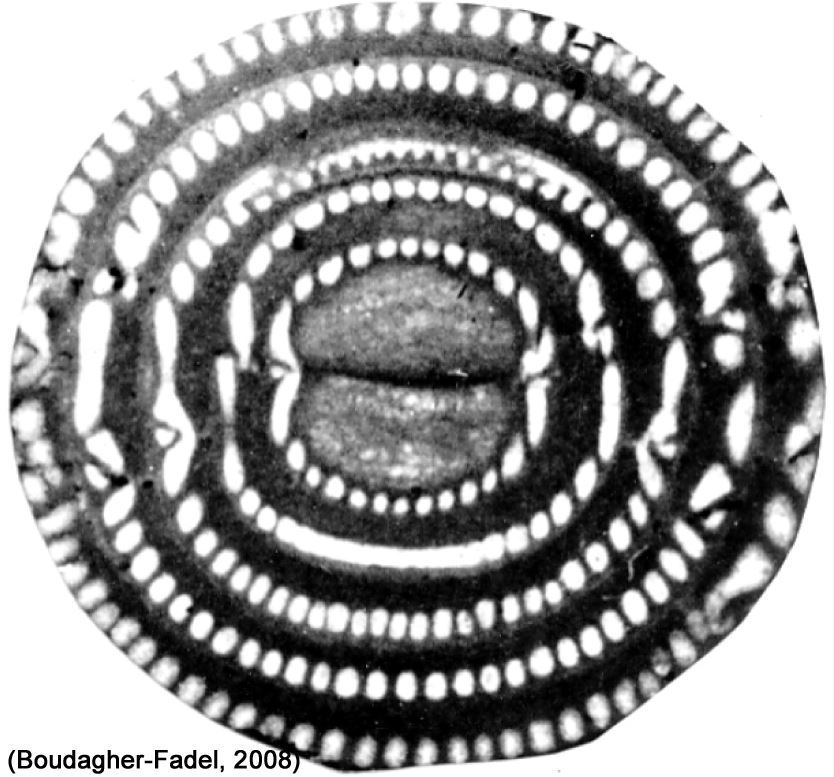Classification
Benthic foraminifera are classified primarily on the composition and morphology of the test. Three basic test wall compositions are recognized; organic, agglutinated, and secreted (calcium
carbonate or silica). Forams that secrete hard mineralized tests are much more common than forams that have soft tests made of organic material (tectin). The hard shell not only offers protection but also aids in buoyancy. The wall structures of the larger foraminifera reflect the biological method used by their living cell to build its shell. The basic structural element of the test is the chamber. The internal space between the chamber walls is called the chamber lumen and the cavities subdividing the chambers are called chamberlets. The reader is referred to Hottinger (2006) for an extensive glossary on the terminology used in foraminiferal morphology.
Larger foraminifera are subdivided into four groups according to their wall structure:

Microgranular tests (i.e., Fusulinina) consist of tiny equidimensional grains of calcium carbonate glued together to create a hard shell with no spaces between the grains. It was initially thought that these were agglutinated tests and that the grains came from the sea floor, however, these tests are secreted.

Porcellaneous tests (i.e., Miliolina) are composed of microscopic calcite needles. These needles form inside the foram and are later pushed to the outside of the cell. They are called porcellaneous because they are white to colorless with a porcelain luster. They are formed by three layers of calcitic non-lamellar walls with needles forming a mesh-like pattern in the middle layer. They are made from magnesium calcite and are imperforate.
Hyaline tests (i.e., Globigerina; Rotaliina) are typically translucent with a milky iridescent appearance. Forams secrete one layer of calcium carbonate over the tectin material and they add a new lamella to the entire test each time a new chamber is formed. The tiny organic filaments (rhizopodia) deliver liquid calcium carbonate to different places on the exposed tectin surface and these patches merge and harden into a hard shell. The wall is penetrated by tiny pores (perforate) which facilitate the transport of carbon dioxide, oxygen and nutrient salts.
Agglutinated tests consist of cemented grains gathered from the sea floor which are ‘glued’ overtop a soft test by calcareous cement. This type of test first appeared more than 500 million years ago.